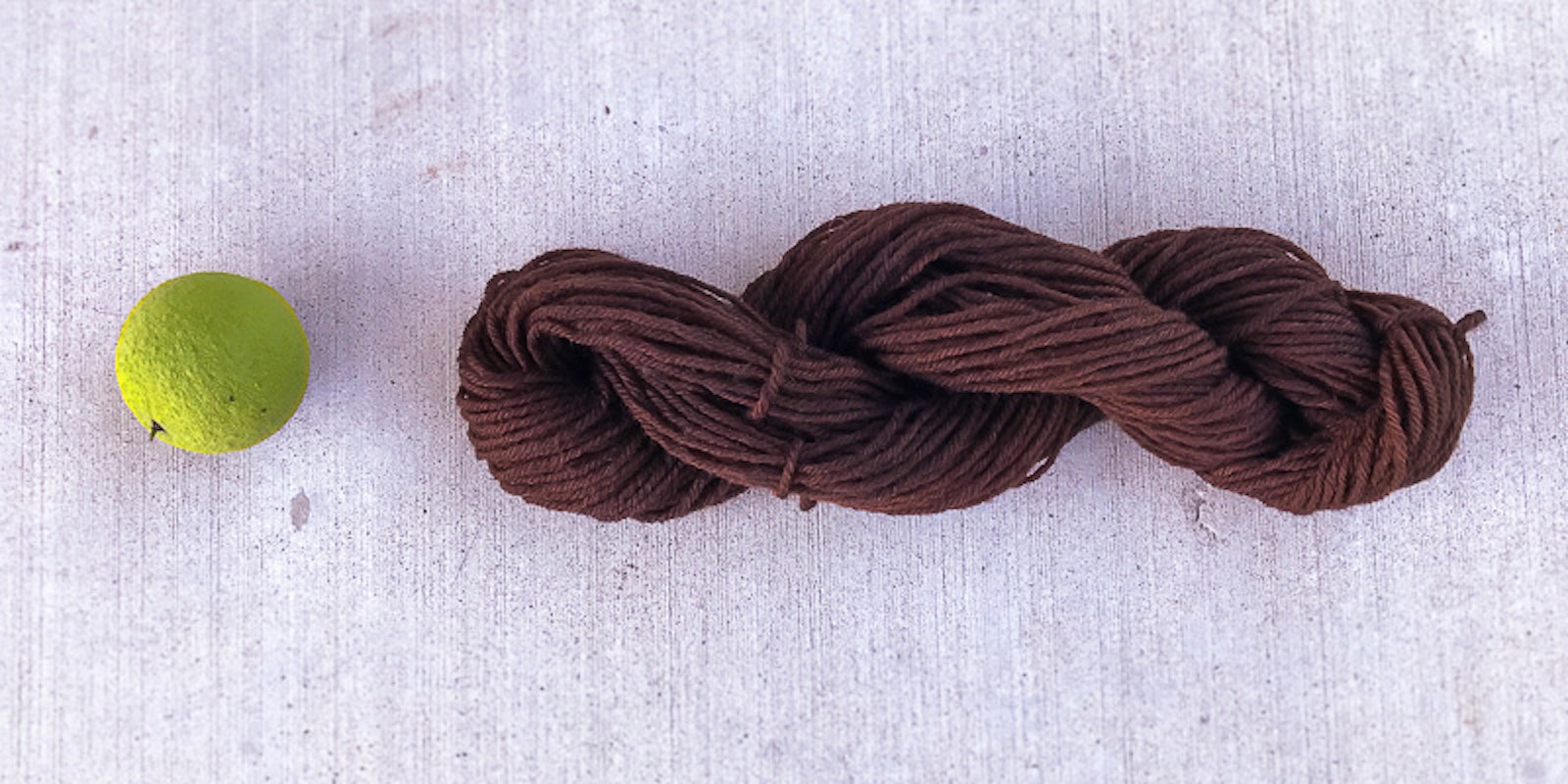I shared one of my jaunts into madder-dyeing a few weeks ago, but I also love foraging for color. Just from where I sit in the morning and spin on my charkha I can see several wonderful dyestuffs that return unbidden each summer. What natural dyes are growing in your backyard?
For the last few weeks, my Saturday spinning group has been foraging for color. We have had several dyepots going each weekend and tried several modifiers. A modifier, or afterbath, can help shift the color of the fiber after it has been removed from the dyepot. Here are a few ubiquitous Indiana plants we have tried so far:

The hulls that surround the walnuts as they grow on the tree produce a wonderful brown dye. Kate’s handspun 4-ply Horned Dorset dyed with black walnut and an alkaline afterbath.
Black Walnut
After a very wet spring, the walnut trees in my region are overloaded with ripening nuts. While they are about half to three-quarters of the fully ripened size right now, I wanted to see what type of color we would get. Our skeins had an amazing depth of color after only a twenty-minute simmer in the dyepot, but we decided to try something else a bit different: an alkaline afterbath. I’m in love with this mahogany skein of 4-ply handspun Horned Dorset and am quickly spinning more to dye a larger project.

Purple chicory and white wild carrot flowers, leaves, and stems can be simmered to extract yellow dyes. At top: left is wild carrot, right is wild carrot and iron afterbath. At bottom: left is chicory, right is chicory and iron afterbath.
Wild Carrot (Queen Anne’s Lace) and Chicory
These plants (Wild Carrot and Chicory) fill the summer roadsides of huge swaths of North America. To some they are invasive, troublesome weeds; to others they are beautiful sources of habitat for insects and animals. Either way, my sheep think they are delicious and I love using them for dyeing. My friends and I used alum to mordant our skeins and gave them a long simmer in the dyepots. Afterwards, some of the skeins were placed in an iron modifier to produce lovely greens.
If you are interested in foraging for plants:
- Do some research. Make sure you know how to identify the plant you are after. Some plants that are great in the dyepot look similar to toxic plants.
- Take precautions. In case you are allergic to the plants you are looking for or encounter while out foraging, it’s best to wear gloves and clothing that covers arms and legs.
- Forage ethically. Never take all of any type of plant or fungi you are collecting so it can repropagate. Ask before foraging on someone else’s property. Follow restrictions on removing materials from state and national parks.
—Kate Larson

